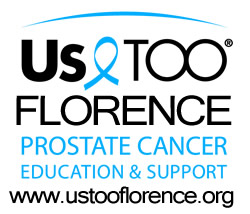|
||||||||
| Home | News You Can Use |
About Us TOO Florence |
Personal Journeys | Slideshows | Contact Us | |||
Events News you can use Treatments |
Us TOO FLORENCE - BEHIND THE HEADLINES BY BOB HORNEY - PROSTATE CANCER SURVIVOR - Us TOO CHAPTER LEADER Published June 8, 2016, The Siuslaw News The efforts to kill PSA screening for prostate cancer don't jive with statistics from the Centers for Disease Control and Prevention/National Center for Health Statistics (CDC/NCHS). Nor do they reflect the personal experiences of over 180 men, diagnosed with prostate cancer, who have attended Us TOO Florence meetings. Men who agree with Oregon Urology Institute, "It is better to know than to not know." Consider the following: It didn't take long for the U.S. Preventive Services Task Force (USPSTF) to reconsider its 2012 recommendation against routine PSA-based screening for prostate cancer. This is something it brought upon itself by charging headlong into its recommendation despite numerous public comments pointing out problems with the data being used. Many of these comments were by experts in urology who diagnose and treat prostate cancer on a daily basis. In spite of pointing out over and over that the Prostate, Lung, Colorectal and Ovarian (PLCO) trial was not a screening versus no screening trial, the USPSTF totally disregarded those comments and proceeded to its final recommendation. So, here we are about 4 years later. The USPSTF requested public comments last fall as it started reconsidering that recommendation. Its decision probably won't be forthcoming until sometime in 2018. This is a startling turn around for a decision that the USPSTF stood behind so adamantly, even in the face of questions and criticism from urology groups, individual urologists, support groups, patients, their families and others. Then there was the 2015 effort by the Centers for Medicare and Medicaid Services (CMS) which had contracted with Mathematica Policy Research (Mathematica) to develop a clinical quality measure entitled "Non-Recommended PSA-Based Screening." The intent of the measure was to reduce the use of medical services that had been found to result in more harms than benefits (straight from the USPSTF recommendation). The intent was to discourage the use of PSA-based screening in the general population of men even to the point of financially penalizing physicians who ordered those tests. Fewer PSA tests would equal higher performance! Unbelievable! After reviewing the public comments, CMS stopped development of the measure and pledged to work with the American Urological Association as well as additional members of the community such as providers and patients. By taking the time to engage stakeholders, it can then determine the path forward. It seeks to develop quality measures that facilitate effective, safe, efficient, patient-centered, equitable, and timely care. And then this: The American Cancer Society (ACS) decided in 1996 to establish a goal of reducing deaths from cancer by 50 percent over a 25-year period, from 1990-2015. The 50 percent was determined by looking at each cancer and figuring that if they applied all that was known then (1996), cancer mortality could be reduced by 40 percent with another 10 percent reduction being achieved through new discoveries in treatment. The results, obtained from the CDC/National Center for Health Statistics, were just released and the reduced cancer mortality for the 25-year period was only 26 percent. However, there was one shining star among the data - PROSTATE CANCER MORTALITY WAS REDUCED BY FIFTY-THREE PERCENT. Yes, prostate cancer was the only cancer to meet or exceed the 50 percent goal and, not surprisingly, for 22 of those years early detection of prostate cancer with PSA screening was considered life saving. For many of us, it truly was. For many men to come, it will be...if they have access to it. From the above ACS report: "The 50 percent reduction goal was more fully met for the cancer sites for which there was enactment of effective approaches for prevention, early detection, and/or treatment." Those are clearly supportive factors in prostate cancer's 53 percent reduced mortality from 1990-2015 and it took all three working together. |
| www.ustooflorence.org Copyright © 2010 - 2025 | |

